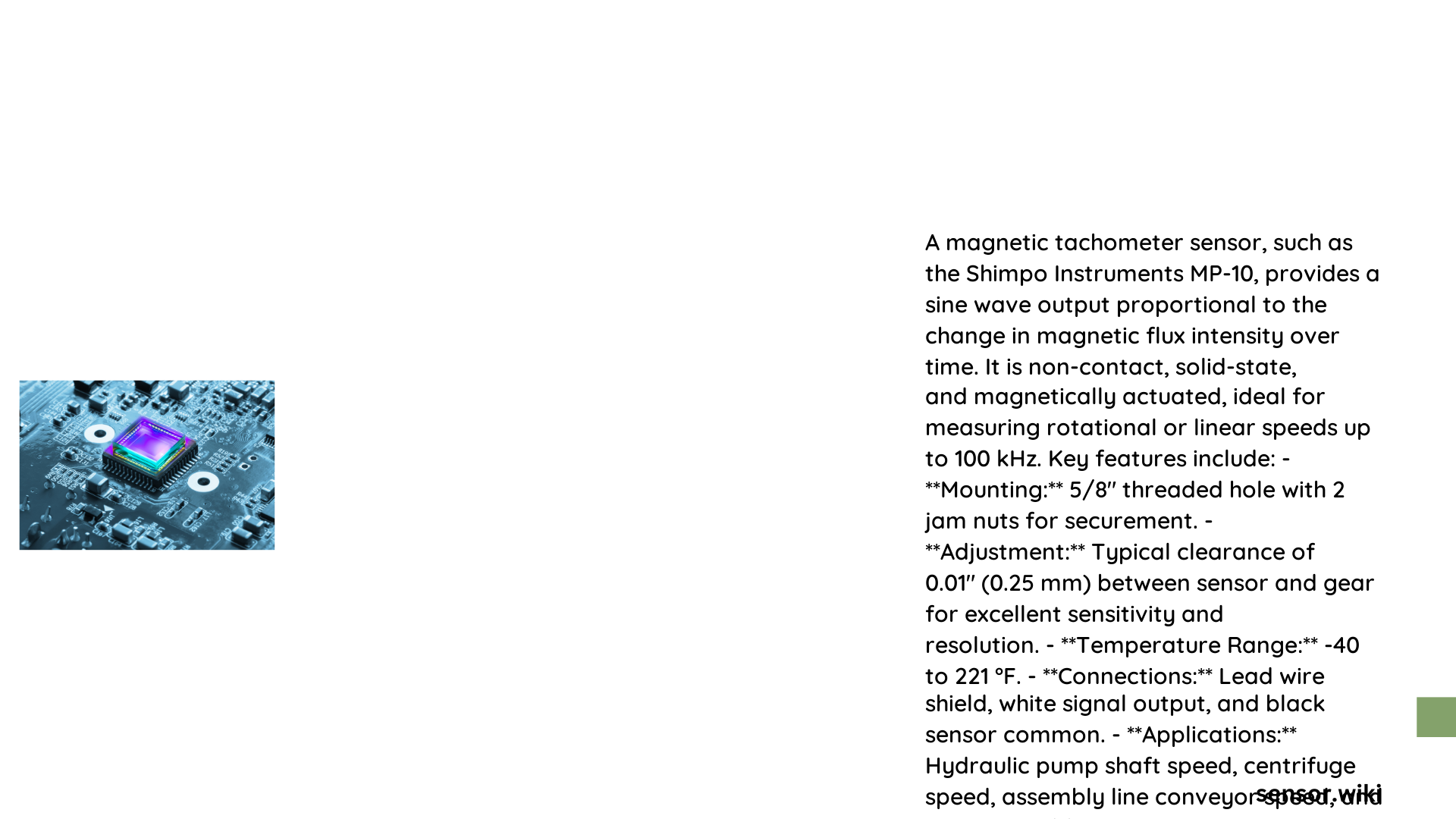A magnetic tachometer sensor is a sophisticated electronic device designed to measure rotational speeds with exceptional precision, utilizing magnetic field variations to generate electrical signals that correspond directly to the movement of rotating machinery. These advanced sensors provide critical performance insights across diverse industrial applications, transforming mechanical motion into quantifiable electrical data through innovative magnetic detection technologies.
What Are Magnetic Tachometer Sensors?
Magnetic tachometer sensors are specialized electronic instruments that detect and measure rotational speeds by monitoring changes in magnetic fields generated by moving metallic components. These sensors convert mechanical motion into electrical signals, enabling precise speed measurements across various industrial and mechanical systems.
How Do Magnetic Tachometer Sensors Work?
- Magnetic Field Interaction
- Detect variations in magnetic flux when ferromagnetic targets rotate
- Generate electrical signals proportional to rotational speed
-
Operate without direct physical contact with moving parts
-
Signal Generation Mechanisms
- Produce self-generated AC or DC signals
- Convert magnetic field fluctuations into measurable electrical outputs
- Provide high-resolution speed measurements
What Are the Key Performance Characteristics?
| Characteristic | Typical Range |
|---|---|
| Measurement Range | 1 – 99,999 RPM |
| Output Type | Analog/Digital |
| Operating Temperature | -40°F to 250°F |
| Response Time | Milliseconds |
Where Are Magnetic Tachometer Sensors Applied?

Industrial Automation Applications
Magnetic tachometer sensors find extensive use in:
– Motor performance monitoring
– Conveyor speed control
– Hydraulic system management
– Centrifuge speed regulation
– Precision machinery tracking
Critical Performance Parameters
Accuracy Considerations
- Typical error margins: ±0.05%
- Influenced by:
- Sensor alignment
- Operating temperature
- Magnetic field stability
- Target surface characteristics
Installation Requirements
- Precise mounting clearance (0.005-0.25 inches)
- Minimal electrical interference
- Stable mechanical environment
- Appropriate power supply configuration
What Technical Specifications Matter?
Voltage and Power Requirements
- Self-powered options available
- External power range: 3.3 to 24V DC
- Low current consumption (15 mA typical)
Output Signal Characteristics
- Sine wave generation
- TTL compatible signals
- Frequency proportional to rotational speed
How to Select the Right Magnetic Tachometer Sensor?
Selection Criteria
- Determine measurement range
- Assess environmental conditions
- Evaluate signal compatibility
- Consider mounting constraints
- Review temperature specifications
Recommended Installation Best Practices
- Maintain recommended sensor-target clearance
- Use appropriate mounting hardware
- Shield against electrical noise
- Perform periodic calibration
- Verify signal integrity
Advanced Considerations
Emerging Technologies
- Integration with IoT platforms
- Enhanced signal processing algorithms
- Miniaturization of sensor components
- Improved noise immunity techniques
Troubleshooting Common Issues
Signal Quality Problems
- Check sensor alignment
- Verify power supply stability
- Inspect target surface condition
- Use signal conditioning equipment
Maintenance Guidelines
- Regular visual inspections
- Periodic calibration checks
- Clean sensor surfaces
- Monitor signal consistency
- Replace if performance degrades
Reference:
– Monarch Instrument Magnetic Sensors
– Shimpo Instruments Magnetic Pick-Up Sensor
– ASTC Preamplifier Documentation
